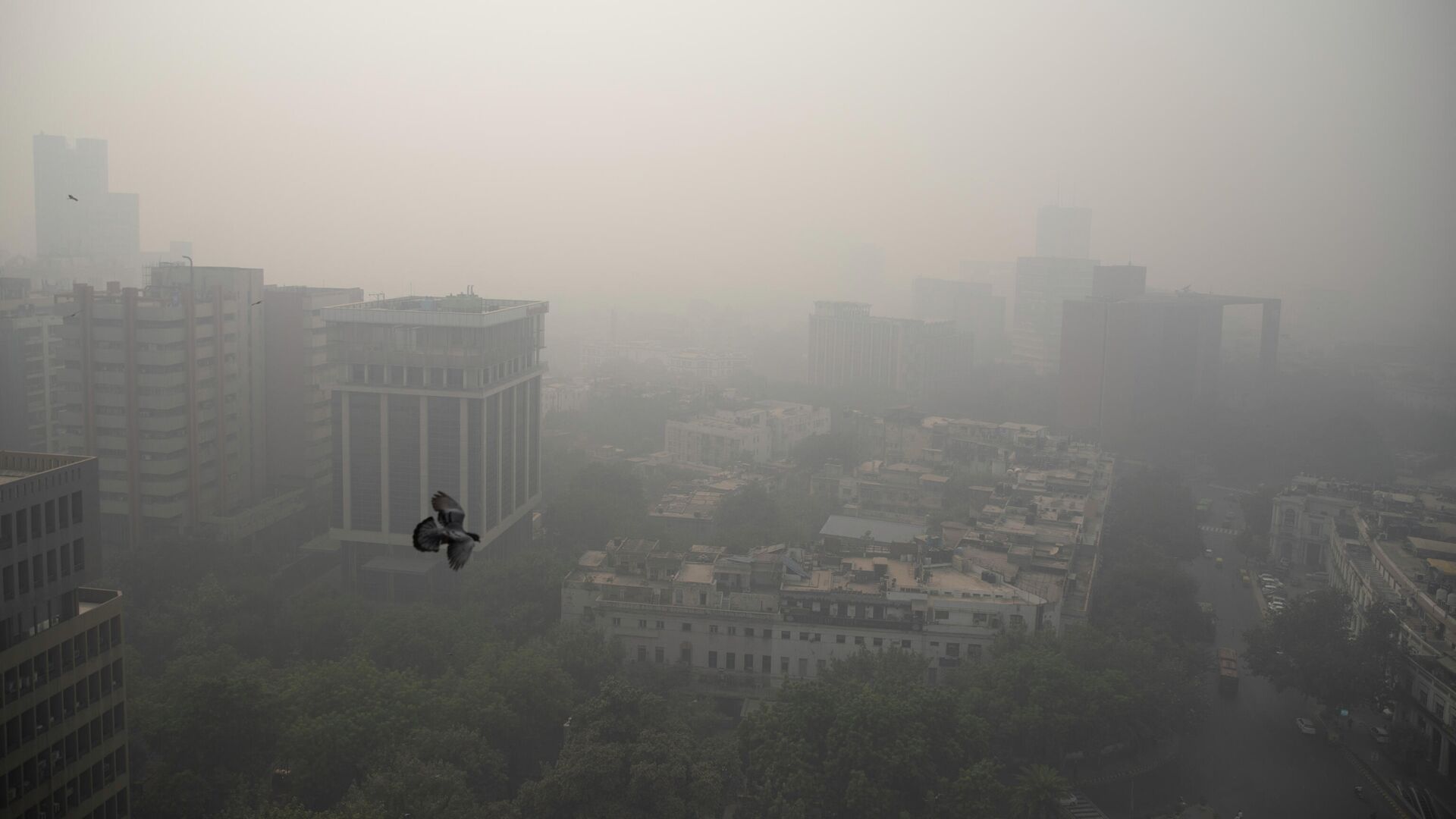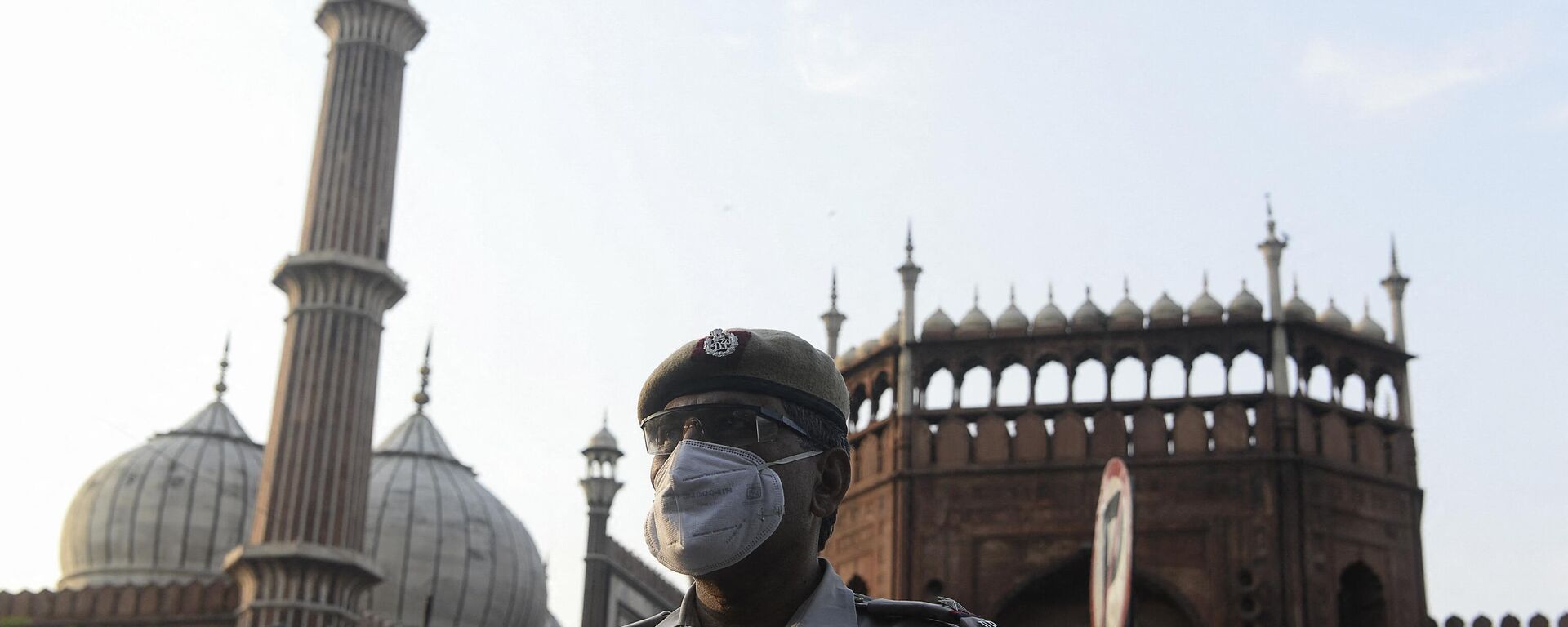https://sputniknews.in/20230111/delhi-sees-seasonal-spike-in-respiratory-illnesses-amid-air-pollution-448982.html
Delhi Sees Seasonal Spike in Respiratory Illnesses Amid Air Pollution
Delhi Sees Seasonal Spike in Respiratory Illnesses Amid Air Pollution
Sputnik India
Delhi air quality remains between very poor and severe category, and the temperature continues to drop, the city is now reporting more cases of respiratory illness, especially among children and senior citizens.
2023-01-11T13:41+0530
2023-01-11T13:41+0530
2023-01-11T13:41+0530
india
delhi
https://cdn1.img.sputniknews.in/img/07e7/01/0b/454121_0:320:3073:2048_1920x0_80_0_0_2a704dfff7fb70b0958cba3796e0a62c.jpg
As the air pollution level in the Indian capital remains between very poor and severe, and temperatures continue to drop, Delhi is seeing a spike in cases of respiratory illnesses, especially among children and senior citizens.Cases of lung ailments, including asthma and chronic obstructive pulmonary disease are among the most widespread, not to mention simple cold and flu.The average air quality index from January 1 to 10 was 367.An AQI between zero and 50 is considered good, 51 and 100 satisfactory, 101 and 200 moderate, 201 and 300 poor, 301 and 400 very poor, and 401 and 500 severe. The AQI in the very poor and beyond category is likely to cause respiratory issues upon prolonged exposure.Therefore, an increase in respiratory issues has been reported from October till the end of January every year, he added.
https://sputniknews.in/20230110/delhis-air-quality-worsens-plunging-into-severe-category-432729.html
india
delhi
Sputnik India
feedback.hindi@sputniknews.com
+74956456601
MIA „Rossiya Segodnya“
2023
Deexa Khanduri
https://cdn1.img.sputniknews.in/img/07e6/0c/13/138923_52:0:533:481_100x100_80_0_0_cadf23d341691fc65ff2b22fd1afe584.jpg
Deexa Khanduri
https://cdn1.img.sputniknews.in/img/07e6/0c/13/138923_52:0:533:481_100x100_80_0_0_cadf23d341691fc65ff2b22fd1afe584.jpg
News
en_IN
Sputnik India
feedback.hindi@sputniknews.com
+74956456601
MIA „Rossiya Segodnya“
Sputnik India
feedback.hindi@sputniknews.com
+74956456601
MIA „Rossiya Segodnya“
Deexa Khanduri
https://cdn1.img.sputniknews.in/img/07e6/0c/13/138923_52:0:533:481_100x100_80_0_0_cadf23d341691fc65ff2b22fd1afe584.jpg
respiratory infections, colds and flu in delhi, delhi pollution, pollution, air quality index in delhi, air pollution level in delhi, respiratory disease spike in india, air pollution in india
respiratory infections, colds and flu in delhi, delhi pollution, pollution, air quality index in delhi, air pollution level in delhi, respiratory disease spike in india, air pollution in india
Delhi Sees Seasonal Spike in Respiratory Illnesses Amid Air Pollution
Deexa Khanduri
Sputnik correspondent
Delhi’s air pollution was reportedly the culprit behind approximately 54,000 deaths in 2020.
As the air pollution level in the Indian capital remains between very poor and severe, and temperatures continue to drop, Delhi is seeing a spike in cases of respiratory illnesses, especially among children and senior citizens.
Cases of lung ailments, including asthma and chronic obstructive pulmonary disease are among the most widespread, not to mention simple cold and flu.
Speaking to Sputnik, doctors revealed this has actually become a pattern for Delhi: whenever Air Quality Index (AQI) remains above the 350 mark for days, the cases go up.
The average air quality index from January 1 to 10 was 367.
An AQI between zero and 50 is considered good, 51 and 100 satisfactory, 101 and 200 moderate, 201 and 300 poor, 301 and 400 very poor, and 401 and 500 severe. The AQI in the very poor and beyond category is likely to cause respiratory issues upon prolonged exposure.
Dr. Karan Madan, a pulmonologist at AIIMS Delhi, said that currently, Delhi's air is dry, and coupled with the high level of pollution, it all leads to irritated lungs, causes shortness of breath, and accelerates the existing lung and heart problems.
Therefore, an increase in respiratory issues has been reported from October till the end of January every year, he added.



